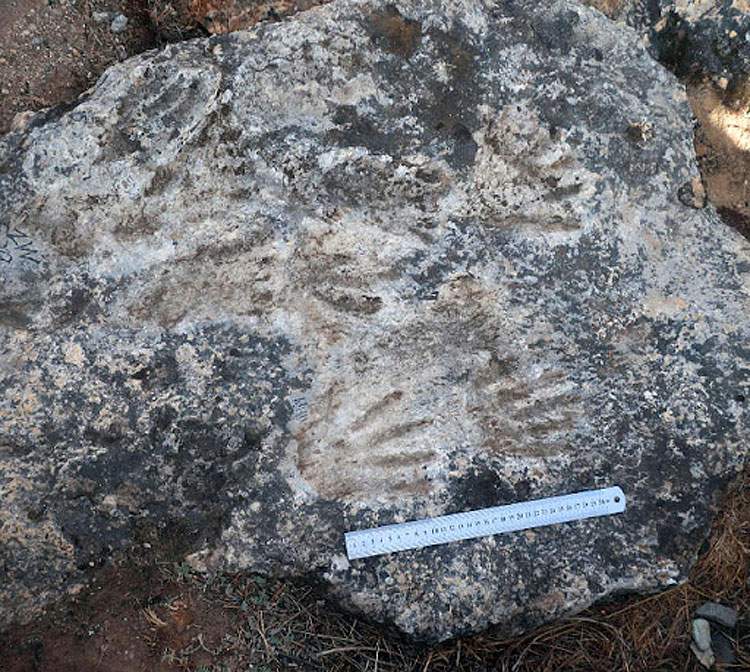In China, a group of international scholars led by Professor David Zhang of Guangzhou University’s School of Geography discovered some hand and footprints that, given their arrangement, were intentionally left by their authors on a travertine boulder near the present-day village of Quesang on the Tibetan Plateau, about 70 kilometers north of the capital Lhasa. Based on the shapes and sizes of the footprints, the tracks have been attributed to two different people, in this case two children (one about seven years old and one about 12 years old according to estimates), and have been dated to between 169,000 and 226,000 years ago. Because scholars interpret the footprints as an act of intentional artistic creation, the dating would make these footprints the oldest known work of wall art as well as the oldest evidence for dating the presence of hominids on the Tibetan Plateau. In addition, the discovery, say the sutors, identifies that children are also to be counted among the earliest artists of the genus Homo. The discovery was published in the scientific journal Science Bulletin.
According to the scholars of the research group, it is possible to identify these footprints as a work of art due to the fact that their arrangement does not follow the natural movement of the human body, nor are they the footprints of people standing still in their place, or seeking a stable position: in fact, they read that “such care appears in the composition as to identify the footprints as an early example of parietal art.” The conditionalities are due, scholars explain, to the fact that “what qualifies as art is the subject of relevant debate.” Indeed, NBC explains, there are some scientists who are skeptical that these prints were left deliberately, but there is also debate about dating. However, Professor Thomas Urban of Cornell University, who is part of the research team, is more than convinced: “the arrangement of the footprints,” he explained, “defies any practical explanation, for example that they are footprints left in the act of walking, and also any accidental explanation, for example a fall. They seem to have been carefully arranged, implying that there was a deliberate choice in arranging them in this way.”
These are probably not the footprints of Homo Sapiens, but of other species: they are possibly Neanderthals, who, as is also known, were gifted with artistic abilities. At present, the oldest known examples of rock art are those in the Maltravieso cave near Cáceres, Spain, dating back 66,700 years and discovered in 2018. However, these are entirely different works, made with red marks affixed to the cave wall. In this case, they are instead hand and footprints. They would not, however, be the oldest artwork on record, which some say is to be found in the Trinil shell, a pseudodon fossil carved by Homo erectus between 540 and 430,000 years ago with some zig-zag marks. The Tibet discovery thus revives the debate about what, in hominid productions, can be considered art.
 |
| Tibet, 200,000-year-old footprints discovered: possibly the world's oldest rock artwork |
Warning: the translation into English of the original Italian article was created using automatic tools. We undertake to review all articles, but we do not guarantee the total absence of inaccuracies in the translation due to the program. You can find the original by clicking on the ITA button. If you find any mistake,please contact us.